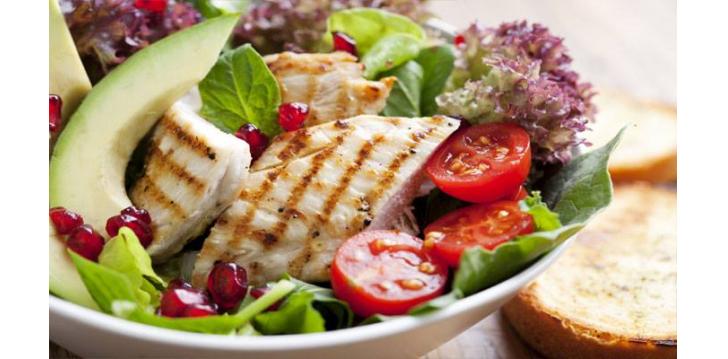
The Importance of Protein in our Diet
You may have heard a lot about protein recently, especially because of the part it plays in combating the ever-expanding obesity epidemic. Experts say we need to get the right amount of high-quality protein, and chicken fills the bill.
Protein is key to the human diet, especially for younger people, because the body uses it to create new cells and maintain or repair existing cells. The body also uses protein to produce enzymes, which help catalyze processes such as digestion, metabolism and storage of fat.
Chicken consists of high-quality protein (that is, protein that contains the eight essential amino acids) and a relatively low amount of fat. In addition, fat in chicken is mostly of the unsaturated type, which protects against heart disease. Thus, chicken is often recommended by physicians and nutrition counselors as an alternative to red meat (beef and pork), which typically has more fat and more saturated fat. Chicken breast without the skin has less fat than sirloin steak, pot roast, 80 or 90 percent lean hamburger, pork chops, or ham.
The federal government’s 2010 Dietary Guidelines for Americans encourage us to eat protein that, like chicken, is low in saturated fat. Did you know:
- A serving of 100 grams (about three ounces) of cooked skinless, boneless breast has only one gram of saturated fat and less than four grams of total fat.
- 100 grams of skinless, boneless breast has 31 grams of protein – more than half the recommended daily allowance of 46 grams of protein for an adult female.
- Chicken is naturally low in sodium. Skinless, boneless has only 74 milligrams of sodium per three and a half ounce (100 gram) portion.
- Chicken is versatile in the kitchen – Hot or cold, it’s an easy ingredient in many ready- in- a- minute meals. Chicken is also a common ingredient among international cuisines, and readily absorbs the flavors of seasonings and spices. When your recipe calls for a meat that is too costly or not available, chicken is always a reliable substitute.
- When cooking plenty of food to have leftovers for future meals, nothing beats the ease of chicken. Leftover grilled or baked chicken prepared early in the week easily transitions to healthy meals such as cold chicken served over salad, or chicken salad mixed with reduced fat mayonnaise.
Under the U.S. government’s “Dietary Guidelines for Americans 2010”, consumers should include 5.5 ounces of protein from poultry, meat, nuts and beans in the daily diet, based on an average consumption of 2,000 calories per day. Therefore, a single three-ounce serving of chicken (an amount about the size of a deck of cards) provides more than half the protein recommended for a typical day.
Chicken is also a good source of niacin (vitamin B3), which aids in metabolism; vitamin B6, important to immune system and blood sugar level maintenance; biotin (vitamin B7), which helps cell growth; and vitamin B12, which is involved in nerve cell and red blood cell maintenance. Chicken also contains iron (oxygen transport and cell growth) and zinc (immune system functioning and DNA synthesis).
The guidelines also recommend that a person consuming 2,000 calories per day should eat no more than twenty grams of saturated fat. Since skinless chicken breast has only one gram of saturated fat per 100-gram (3.5-ounce) serving, chicken offers an easy way to eat protein while keeping consumption of saturated fat to a minimum.
Skinless breast is both the portion of the chicken lowest in fat and the most popular with consumers. In surveys, consumers express preference for skinless, boneless breast by a margin of two to one over other chicken parts. Boneless breast is popular at retail grocery stores and is also the major ingredient in a host of prepared products. It is also present on restaurant menus ranging from fast food to fine dining.
Dark meat has a somewhat higher fat content than white meat and contains more connective tissue than white meat. Its fat content, however, is an advantage in some circumstances. For example, dark meat holds up to the intense heat of outdoor grilling because some of the fat and collagen melts during the cooking process and keeps the meat moist.
Ounce for ounce, the highest-fat portion of the chicken is the skin, with 41 grams of fat (and 454 calories) per 100 grams. However, only a small portion of skin is normally consumed (except in dishes such as “wings”), and removing skin will eliminate those calories. The skin can be left on during cooking without adding calories to the meat. Unlike beef or pork, chicken has little separable fat. A whole chicken will have a fat pad near the opening to the cavity which can be removed if desired. Otherwise, fat in the chicken is largely in the meat itself (especially dark meat); attached to the underside of the skin; or located between the skin and the muscle.
Source:- www.nationalchickencouncil.org
